I think the role of an artist is maybe to be an individual. I get really tired of seeing different artists making the same work. Individualism is challenging and interesting. I consider myself a landscape painter, but these are my landscapes, my places.
The wilderness and memory inhabit Lauren Fogg’s landscapes and painting is what she prefers
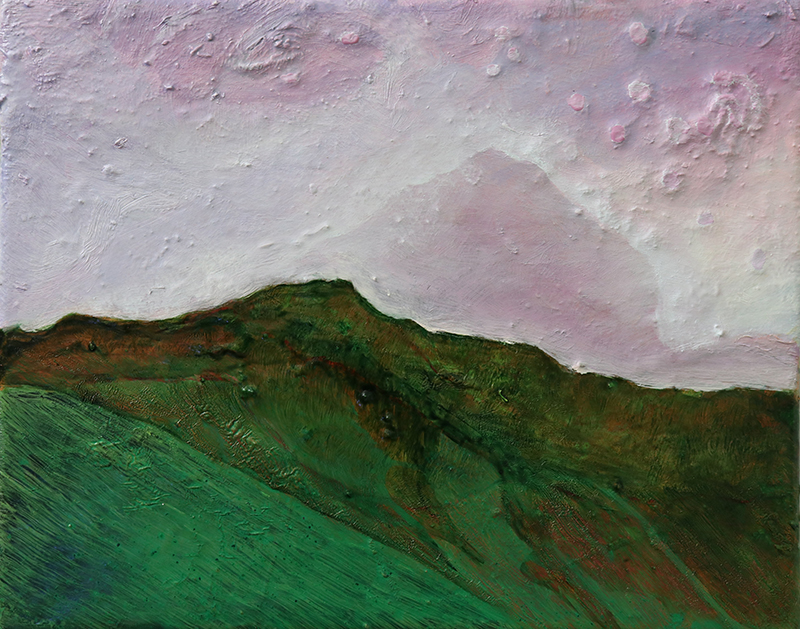
Where and how did your journey in the world of art begin?
I have been making art, painting in particular, since I was a kid. I don’t ever remember not painting. All through school I was always more interested in art than anything else. I would cover nearly every surface in our house with patterns and designs, very colourful but nothing like I do now.
It wasn’t until I went to college that I discovered what I really love doing. That’s when I started painting in oils and focussing on landscapes. During this time, I also had a strong set of teachers and fellow painters who really helped with my development. I can honestly say that I wouldn’t recognise my early work as my own because things began to change very quickly once I was able to get a hang of oil as a medium.

Tell us about your evolution as an artist and the impact it has had on your process.
For years I would obsess about the surface quality of my paintings. I would build and build oil paint, layer upon layer, creating thick, textured surfaces, and the final image would almost form just by accident. But over the years I have started worrying less about how thick a painting is and focusing more on the imagery. The build-up still plays a role, just not the biggest anymore. It’s more like a part of my bag of tricks than the main event. This has really allowed me to develop landscapes that feel more intentional and formed.
As my process has changed, so have my landscapes – they are still abstractions, but are more connected to the real world. I used to never even think about the final image until I was nearing the end of the painting, but now I approach my work more with an end game in mind, even though the translation of that image is always changing as I work.
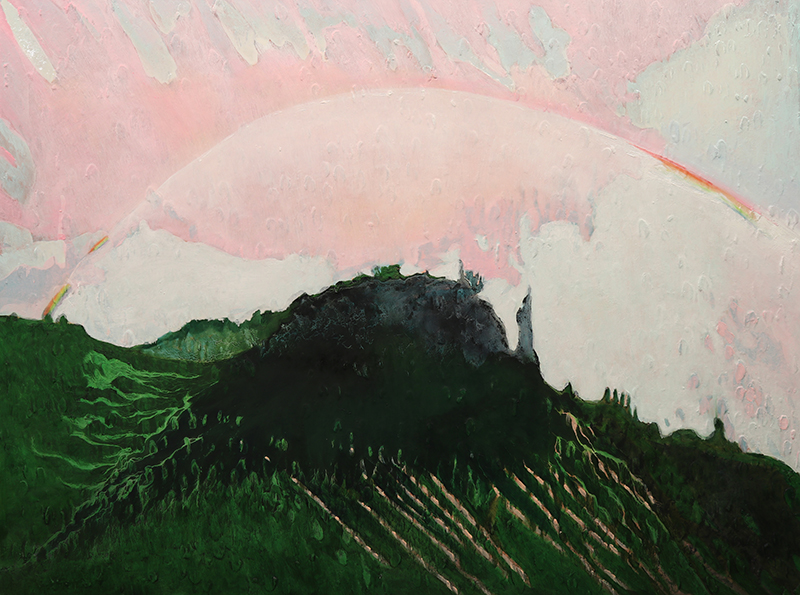
Take us through your frameworks of reference.
Ever since I was little, there’s no place I’d rather be than outside. I have always spent every second I can outside, looking around, listening, and just generally observing. It’s hard to explain, I guess I have always felt some connection to nature, and I am constantly contemplating it. It amazes me how much things change and how varied the world is.
I take these long trips into the wilderness with my husband, and we camp and hike for a few weeks at a time. These times of almost complete immersion really come home with me into the studio. I always paint from memory, and often these memories are melted together from places I have seen. While traveling, I am photographing the whole time. I do reference these photos, not by copying them, but just by reminiscing.
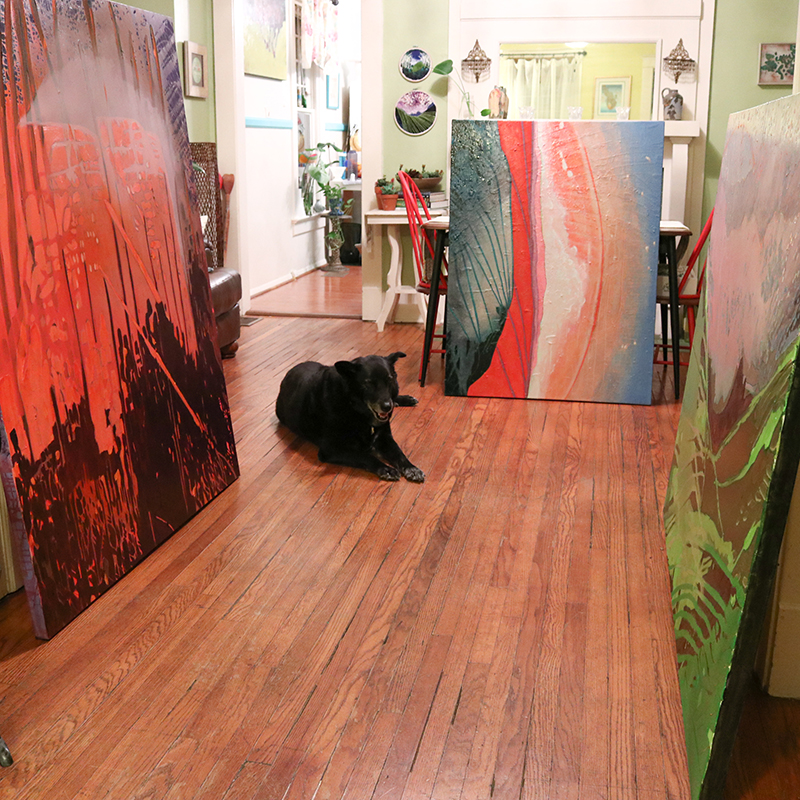

What is the primary role of an artist? How do you describe yourself in the context of challenging people’s perspectives via your work and art?
I think the role of an artist is maybe to be an individual. I get really tired of seeing different artists making the same work. Individualism is challenging and interesting. I consider myself a landscape painter, but these are my landscapes, my places. Of course, I am influenced by different artists, but I never try to replicate them, at least not purposely. The challenge of creating something new is half the fun. I think this sometimes makes my landscapes less relatable to the viewer, but in a way that might be a good thing.

How do you balance art and life?
My studio is actually located in my house, so art is always a part of my life. I do, however, try to maintain some form of a daily schedule just for my own sanity. But if an idea ever pops up late at night, it’s very convenient to be able to go right into the studio. I have very few people I feel comfortable talking about my painting with. It’s a very self-conscience and personal thing to dive into. So when it comes to discussing my art I usually wind up keeping most of my thoughts to myself. I was told years ago that being a painter is a lonely profession, and they were right. I don’t think it has done much to help my social life!
How do you deal with the conceptual difficulty and uncertainty of creating work?
Making art is hard. Sometimes it feels like I’ve completely run out of ideas and that I have no clue what I am doing or what direction I need to take. In these moments it’s hard to remember that I have had so many of these moments before. Every time it is the same answer – keep working. Eventually, I will figure things out, a painting will just appear, and I will actually sit back and wonder “who did that?”
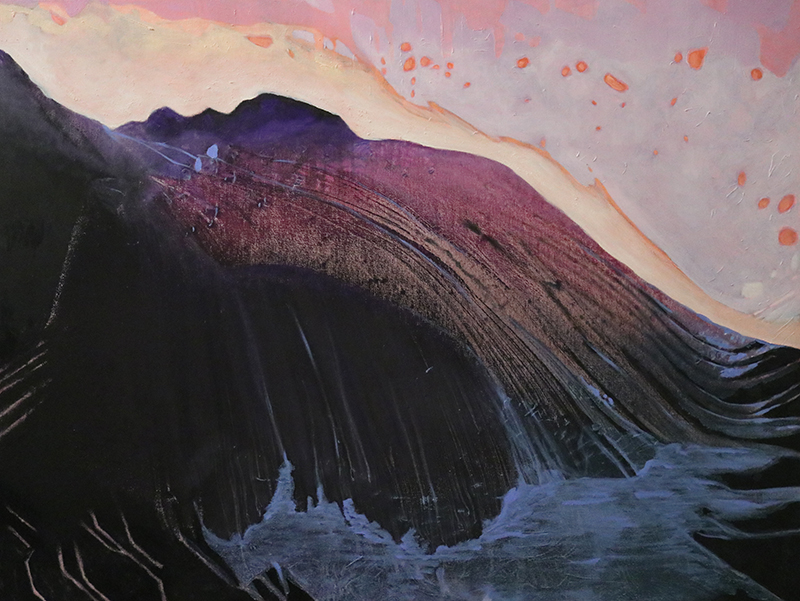
How does your audience interact and react to the work?
I am not exactly sure I can answer that, but I do hope that they see I am approaching landscapes from a perspective that reflects my relationship to the world rather than seeing the world as it is.
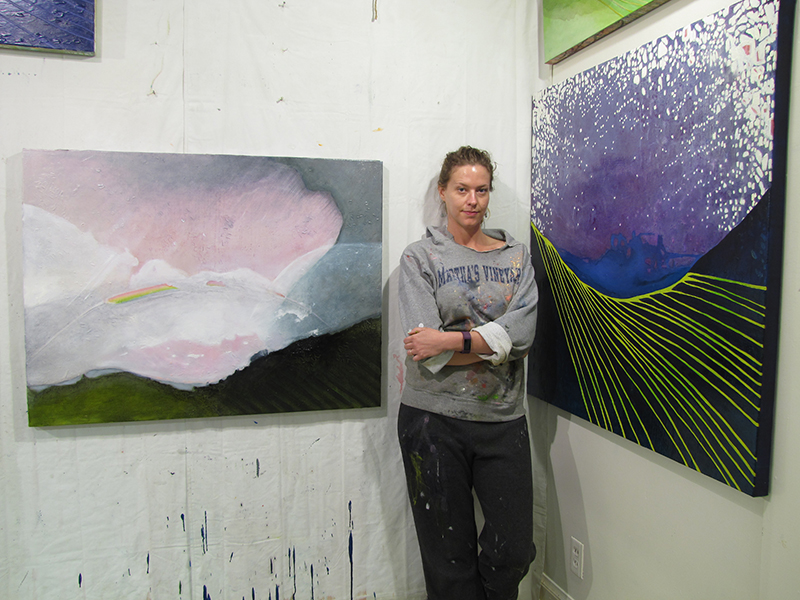
Who are you maestros?
I’ll be honest, I love painters and I love paintings. So, when I go looking for art, I am looking for paintings. That’s not to say I don’t enjoy other work. It’s just that nothing has ever affected me more than painting. To me it’s magic.
The best painting exhibition I have ever seen was a retrospective of Glenn Brown in Liverpool. I had never seen paintings like that. Each individual stroke was mind-boggling to me. I think about that show so often because his work has to be seen in person, an image on a screen can never capture his facture. The best painting I have ever seen is James Whistler’s Nocturne in Black and Gold at the Detroit Institute of Art… great museum by the way. It is such a simple painting and yet so much is happening. There is so much depth and movement. I have to drag myself out of the room it is in, and I cry when I leave. Recently, Alice Neel’s self portrait of her sitting nude in a blue and white striped chair made a real impression on me. For some reason, it made me start thinking about stripes in landscapes, and I have been riding that wave for a while now. I should read more about J.M.W Turner. He was such a brave and experimental painter, and a total lech. So I am sure his story is interesting.
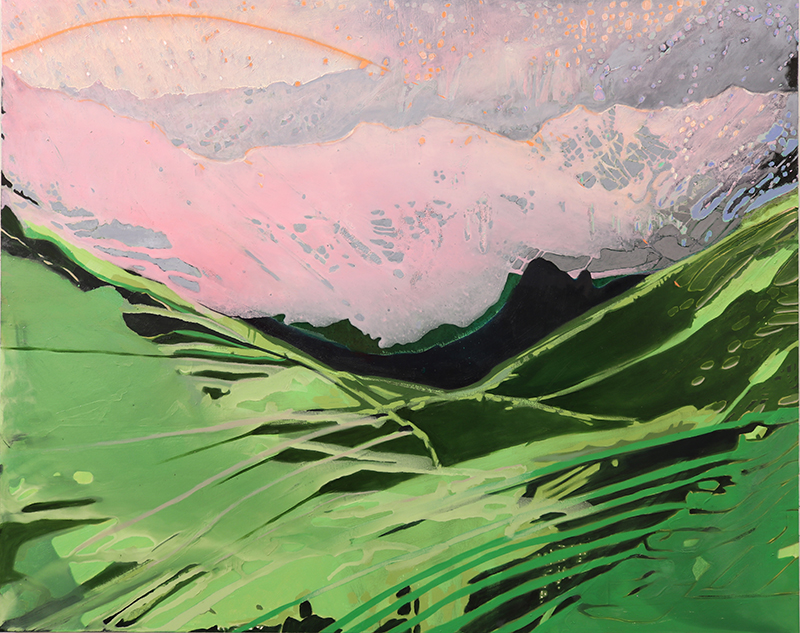
How does your interaction with a curator, gallery or client evolve from the initial interface, to the working-involvement-relationship? How do you feel about commissions?
All of my relationships have evolved differently but I’d say positively. Having an open and honest dialogue with anyone I work with is really important. I can’t say I always agree with others’ opinions, but oftentimes some feedback on my work can be extremely helpful. My current gallerist visits me in my studio, and she does a great job of helping me see what is working and not working without interfering with my creative process. Having someone I trust tell me a piece is finished can be a huge relief.
What are you working on now? What’s coming next season?
I am currently building up a body of work for a solo show sometime in the coming year at Binder Projects in Memphis. I am excited to start some very large pieces in oil. I am also going to explore painting smaller works using gouache.








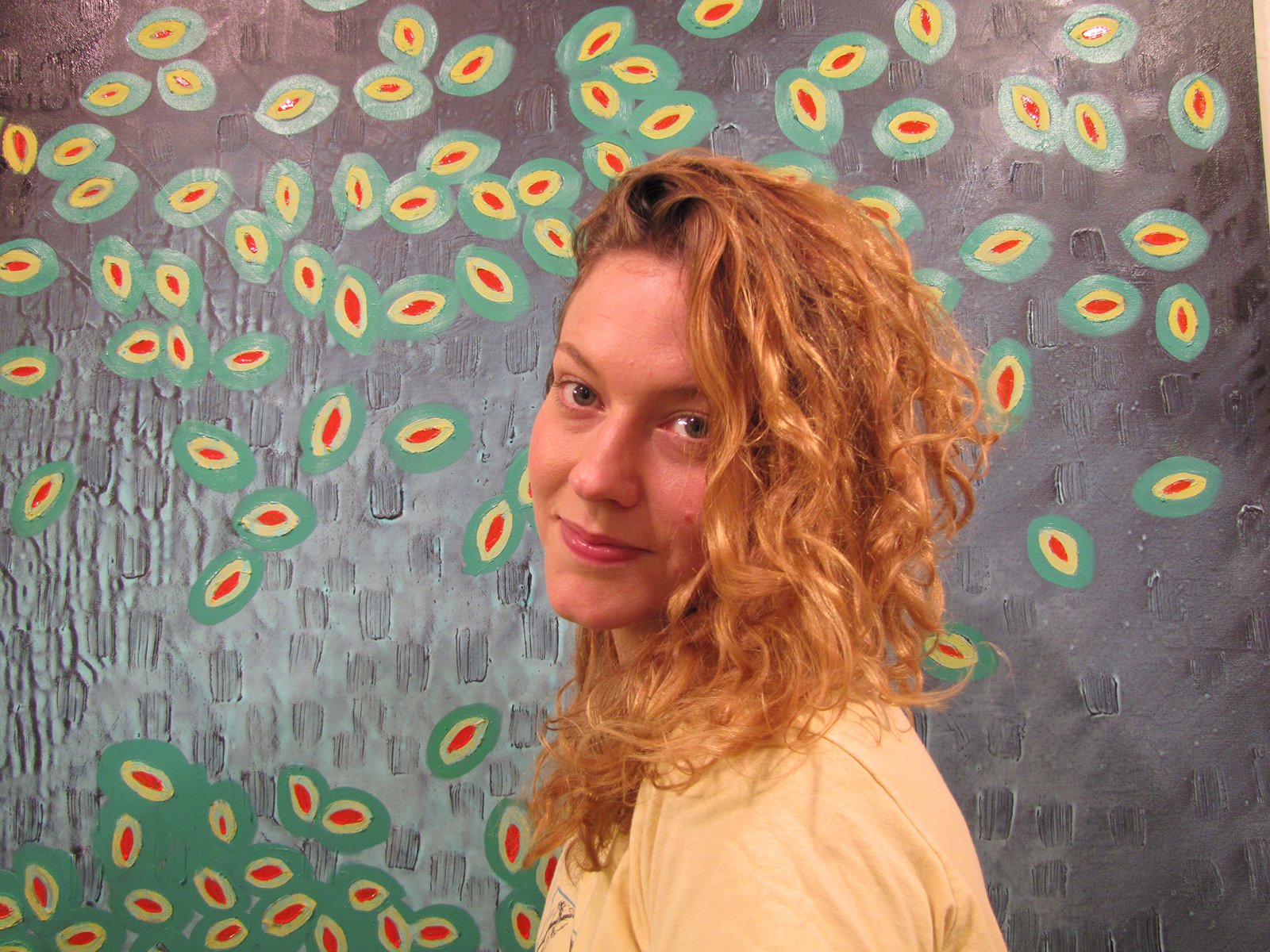



Add Comment